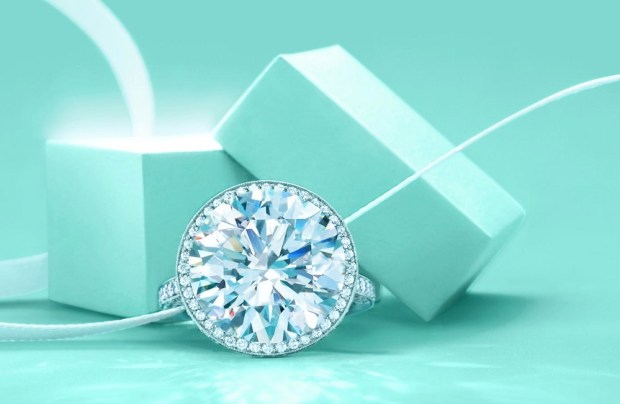Appetite For Apparel: How Retailers Are Using Food To Sell Fashion

Can good food restore consumers’ appetite for brick-and-mortar retail? Luxury brands seem to hope so, with several designers introducing food experiences in an effort to gain an edge in the increasingly challenging realm of physical retail.
If IKEA and its popular Swedish meatballs are any indicator, the strategy just might work.
One of the biggest hurdles in brick-and-mortar retail today is getting customers through the door. If consumers know what they’re shopping for, why would they get in a car and drive to a store when they could achieve the same objective with much less effort by ordering it online?
The barrier to online shopping is relatively low: Consumers already have the smartphone in hand, so using it to make a purchase requires little extra effort — especially if they’re using Amazon’s one-touch shopping feature or something similar.
Retailers like Target are combatting this by offering exclusive brands to draw customers through the door. Supermarket chain Kroger is even introducing its very own clothing line that it hopes will get shoppers into the store — where they might as well get the grocery shopping done, since they’re out.
Shopping online saves consumers time and money, especially if they’re getting free shipping with Amazon Prime or simply by meeting a minimum purchase amount. Plus, consumers can do their research about the product via eCommerce, including price comparison and reading reviews of similar products.
If physical stores are asking customers to give all that up, they had better make the trip worthwhile. A little avocado toast may go a long way toward that goal — or at least, that’s what Tiffany & Co. hopes.
Vanity Fair reported that the New York Tiffany’s flagship store has opened a café called Blue Box Café, which overlooks Central Park from the fourth floor of the retailer’s Fifth Avenue address. The café showcases Tiffany’s luxury home and accessories collection.
Upon entering, customers get the sense that they have walked into one of the company’s iconic blue jewelry boxes. Nestled in Tiffany blue chairs between Tiffany blue walls, customers can enjoy coffee, a croissant and their choice of avocado toast, truffled eggs or a smoked salmon bagel with schmear — all served on Tiffany blue-glazed tableware — for breakfast.
Yes, as of Nov. 10, breakfast at Tiffany’s is no longer just a classic film but a real thing that any customer can enjoy schmear provided they’re willing to shell out $29 for breakfast or $39 for lunch. Lunch comes with a starter and main course, which vary by season. Afternoon tea is also available.
Sure, the prices are steep, but this is New York after all, and how many chances do you get to live out a classic film in real life?
Meanwhile, across the Atlantic, luxury goods firm LVMH opened its second food hall in Paris: a three-story gastronomic goliath stationed amid luxury stores and hotels that have recently seen heavy investments from firms like LVMH and others, according to Reuters.
The new branch is LVMH’s first attempt to expand its Grande Epicerie high-end grocery brand in what officials said was an effort to reinvigorate its retail performance. The food hall has a vertical herb garden along one façade, an underground wine cellar, an Iberian ham outlet and a high-end restaurant.
Sure, you can order groceries online, but does Instacart (or its French equivalent) have its own wine cellar and restaurant? Going to the store may be less convenient, but LVMH, at least, is doing its best to create a value-added proposition to keep customers walking through the door.
Head still further east, and you’ll find that the food and fashion trend is farther along in Asia, where Gucci, for example, opened its first fine dining restaurant in Shanghai in 2015, and where Pierre Hermé opened a café on the top floor of Christian Dior’s Seoul flagship store.
The South China Morning Post noted that adding food and beverage enhances the customer experience by creating an opportunity not just to shop, but to relax and socialize as well. With the fashion market reaching saturation, brands are looking for ways to offer more, and lifestyle seems to be a natural extension for many of these high-end fashion designers.
In a slightly different application of the food-and-fashion marriage, Dolce & Gabbana has teamed up with revered Italian pasta maker Pastificio di Martino to produce limited edition pasta tins to be sold with a Dolce & Gabbana apron. Only 5,000 of the tins will be produced, and each will retail for $110.
Bloomberg reports that this is only the beginning of the collaboration between D&G and di Martino. It all started with a pasta-print chiffon dress. Now, the designers have a two-year contract with the pasta maker and plans for more food-based clothing.
At the non-luxury end of the spectrum, Forever 21 took a similar tack with its Taco Bell partnership and clothing line, suggesting that this isn’t just some weird elitist fashion trend — the food and fashion crossover is happening at every level of the market and seems to be here to stay.
Just don’t indulge too much in the former if you hope to fit into the latter.
